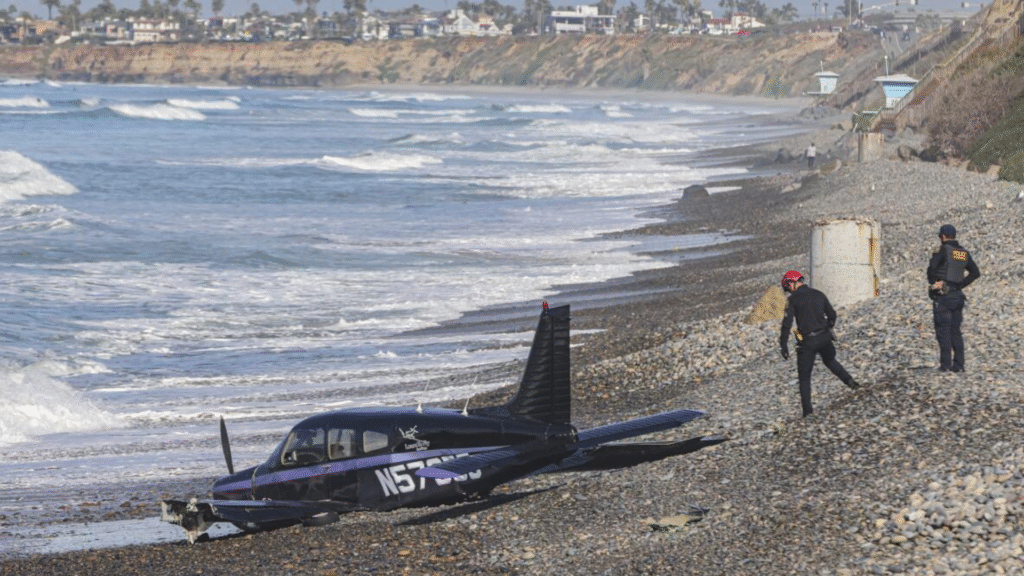
Federal and local authorities launched an investigation on Monday following the tragic crash of a small plane off the coast of San Diego, California.
The incident occurred around 12:30 p.m. Sunday, when a twin-engine Cessna 414 went down into the Pacific Ocean, just minutes after takeoff.
According to the Federal Aviation Administration (FAA), the aircraft had departed from the San Diego area and was en route back to Phoenix, Arizona.
Flight tracking data from FlightAware.com confirmed that the plane had originally flown from Arizona to San Diego the previous day and was on its return journey when disaster struck.
Search and rescue operations were quickly mobilized after the crash, and by late Sunday, U.S. Coast Guard teams had located a debris field approximately five miles offshore from Point Loma, a coastal neighborhood in San Diego that extends into the Pacific Ocean. The debris was discovered in waters roughly 200 feet deep, presenting challenges for recovery teams.
While the identities of the six people on board have not yet been officially released, the Coast Guard confirmed that all are presumed dead. The search and rescue mission has since transitioned to a recovery operation. As of Monday, no survivors had been found.
The aircraft is registered to Optimal Health Systems, a company based in Pima, Arizona, known for producing vitamins and nutritional supplements. The company has not yet responded to media inquiries or issued a public statement regarding the crash or the identities of those on board.
Eyewitness accounts offer a chilling glimpse into the plane’s final moments. Tyson Wislofsky, a surfer who was in the water at the time of the incident, spoke with NBC 7 San Diego about what he saw.
“I saw the plane come down at an angle out of the clouds,” Wislofsky said. “Then it pulled back up into the clouds like it was trying to regain altitude. But the next time it came out, it just dove straight down into the water. After the splash, it went dead silent. I knew they had gone in nose-first and at high speed.”
The FAA and National Transportation Safety Board (NTSB) are leading the investigation into the cause of the crash. Early reports indicate that weather conditions at the time may have played a role.
While no final conclusions have been drawn, aviation experts often cite fog, poor visibility, and mechanical failure as key factors in small aircraft accidents.
This latest crash comes just weeks after another fatal small plane accident in San Diego. That earlier incident involved a Cessna aircraft that went down in a residential neighborhood during heavy fog, killing all six people on board and causing widespread concern about flight safety in poor weather conditions.
Sunday’s crash raises further questions about flight protocols and pilot decision-making during adverse weather, particularly for small aircraft departing from or arriving in the region.
Investigators are expected to examine air traffic control communications, flight path data, and weather conditions at the time of takeoff as part of their ongoing review.
As recovery teams work to retrieve wreckage and any remains from the ocean floor, the victims’ families await answers. Authorities have not provided a timeline for when more information will be released, but the FAA and NTSB have pledged a thorough investigation.
The tragedy marks yet another reminder of the risks involved in private aviation and has prompted calls for a review of safety procedures, especially for small aircraft operating in complex coastal and weather environments like San Diego.

